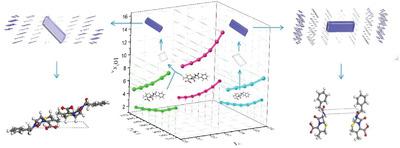当前位置:
X-MOL 学术
›
Cryst. Res. Technol.
›
论文详情
Our official English website, www.x-mol.net, welcomes your
feedback! (Note: you will need to create a separate account there.)
Preparation Process and Growth Mechanism Analysis of Phenylacetyl‐7‐Aminodeacetoxycephalosporanic Acid Crystals with Controllable Morphology
Crystal Research and Technology ( IF 1.5 ) Pub Date : 2020-09-16 , DOI: 10.1002/crat.202000070 Kang Han 1 , Baoshu Liu 1 , Zhefan Zhang 1 , Zhengjie Li 1 , Hua Sun 1
Crystal Research and Technology ( IF 1.5 ) Pub Date : 2020-09-16 , DOI: 10.1002/crat.202000070 Kang Han 1 , Baoshu Liu 1 , Zhefan Zhang 1 , Zhengjie Li 1 , Hua Sun 1
Affiliation

|
A recrystallization process for phenylacetyl‐7‐aminodeacetoxycephalosporanic acid (phenylacetyl‐7‐ADCA) is used to obtain the monoclinic and tetragonal crystal forms. The purity of the process product is 99.7%, which is much higher than the 97.1% of the raw material, while the median (D50) particle size is larger (144 µm) and the diameter span (DS) is reduced from 10.478 (raw material) to 2.070 (new process product). The results show that in water–ethanol systems when the mole fraction of water is less than 0.5, the products obtained are long rod‐shaped, while when the mole fraction of water is greater than 0.5, lamellar crystal products are obtained. The growth mechanism of phenylacetyl‐7‐ADCA with different habits is analyzed by Materials Studio molecular simulation software. The results show that a large number of oxygen and nitrogen atoms at both ends of the crystal are exposed to the crystal surfaces during the cooling recrystallization process and it is easy to form hydrogen bonds with free phenylacetyl‐7‐ADCA. Therefore, the crystal surfaces at both ends grow fastest and tend to disappear eventually. This work may provide a preparation process and simulation method for phenylacetyl‐7‐ADCA crystals, which would help improve the quality of cephalosporins.
中文翻译:

形态可控的苯乙酰基-7-氨基乙酰乙酰氧基头孢菌酸晶体的制备工艺及生长机理分析
苯乙酰基-7-氨基脱乙酰氧基头孢烷酸(苯乙酰基-7-ADCA)的重结晶过程用于获得单斜晶和四方晶型。加工产品的纯度为99.7%,远高于原料的97.1%,而中位数为(D 50)的粒径更大(144 µm),直径跨度(DS)从10.478(原材料)降低到2.070(新工艺产品)。结果表明,在水-乙醇体系中,当水的摩尔分数小于0.5时,得到的产物呈长棒状,而当水的摩尔分数大于0.5时,得到层状晶体产物。通过Materials Studio分子模拟软件分析了不同习惯的苯乙酰基-7-ADCA的生长机理。结果表明,在冷却重结晶过程中,晶体两端的大量氧和氮原子暴露于晶体表面,并且容易与游离苯基乙酰基-7-ADCA形成氢键。因此,两端的晶体表面生长最快并最终趋于消失。
更新日期:2020-09-16
中文翻译:

形态可控的苯乙酰基-7-氨基乙酰乙酰氧基头孢菌酸晶体的制备工艺及生长机理分析
苯乙酰基-7-氨基脱乙酰氧基头孢烷酸(苯乙酰基-7-ADCA)的重结晶过程用于获得单斜晶和四方晶型。加工产品的纯度为99.7%,远高于原料的97.1%,而中位数为(D 50)的粒径更大(144 µm),直径跨度(DS)从10.478(原材料)降低到2.070(新工艺产品)。结果表明,在水-乙醇体系中,当水的摩尔分数小于0.5时,得到的产物呈长棒状,而当水的摩尔分数大于0.5时,得到层状晶体产物。通过Materials Studio分子模拟软件分析了不同习惯的苯乙酰基-7-ADCA的生长机理。结果表明,在冷却重结晶过程中,晶体两端的大量氧和氮原子暴露于晶体表面,并且容易与游离苯基乙酰基-7-ADCA形成氢键。因此,两端的晶体表面生长最快并最终趋于消失。


















































 京公网安备 11010802027423号
京公网安备 11010802027423号